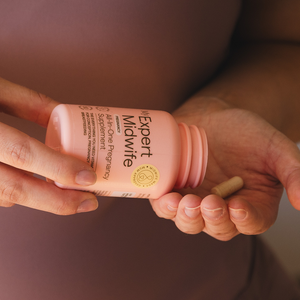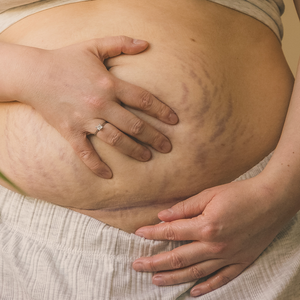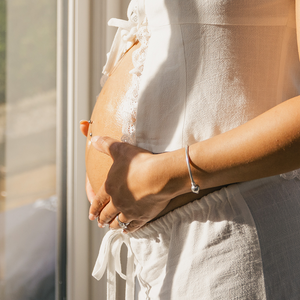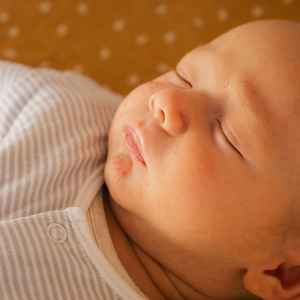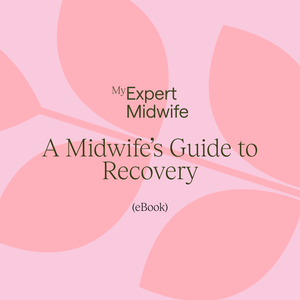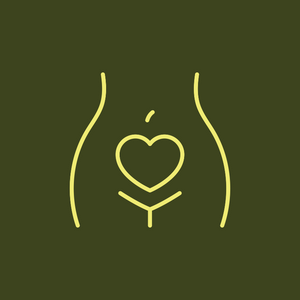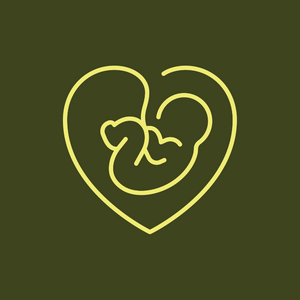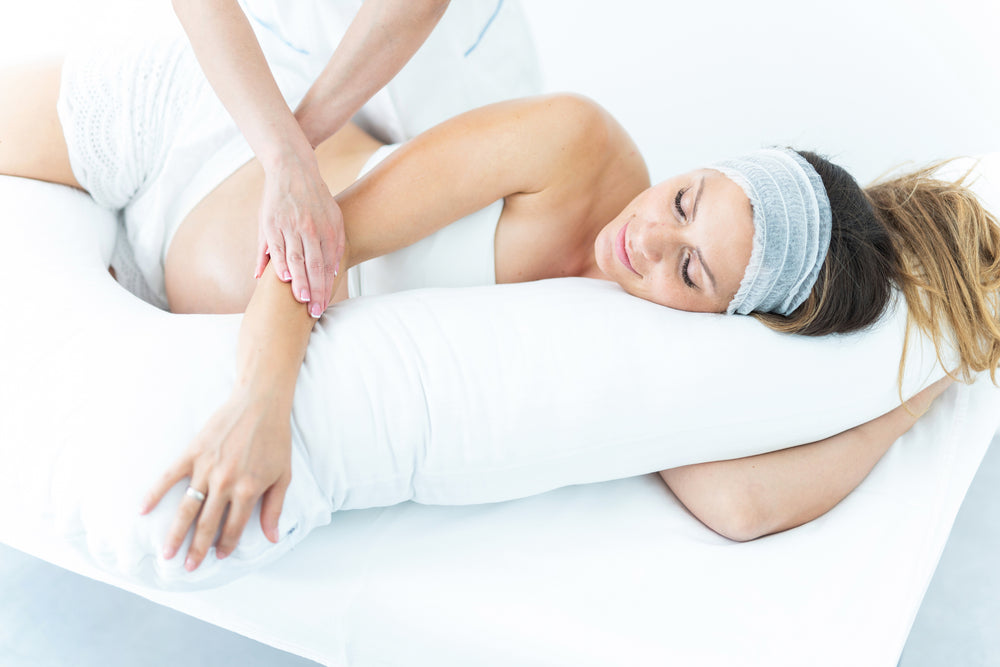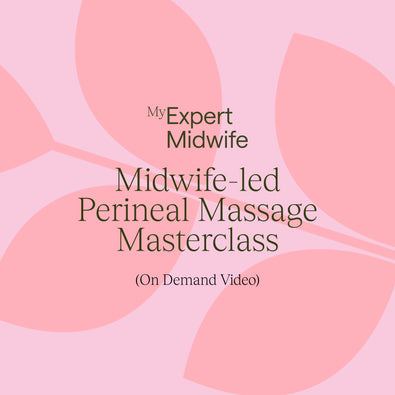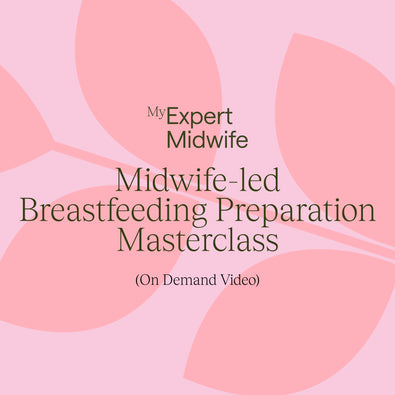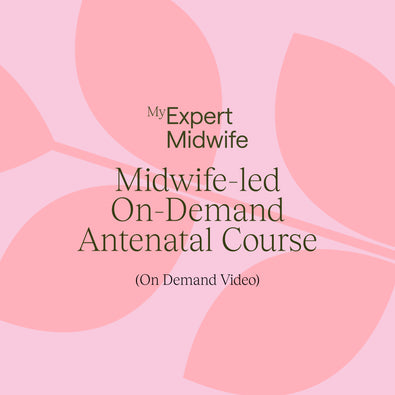Receiving a massage during pregnancy can be incredibly relaxing and beneficial. However, many women and their families may worry about whether it is safe.
Although, for most women, being massaged during their pregnancy is safe and carries a plethora of benefits, there are some cautions to bear in mind.
This blog will explore massage safety through the 3 trimesters.
1st trimester
It is generally very safe to receive a massage in the first trimester of pregnancy.
Hesitancy from many women to receive a massage or from some therapists to give one during this period is typically rooted in misinformation and conflicting advice, both of which lead to confusion.
Rest assured, however, that there is no known mechanism through which massage can cause a miscarriage. If you think about it, during your first trimester you’re not given time off your stressful job, nor do you stop picking up your toddler, carrying shopping or going in the car in case of potholes or speedbumps. In this context, making massage ‘off limits’ during the first 12 weeks of your pregnancy makes little sense.
Deep abdominal massage is possibly the only real contraindication during the first trimester.
Do speak to your specialist doctor before receiving a massage if you have any of the following: gestational diabetes, diabetes that was diagnosed before pregnancy, or any disease of the heart, liver, kidney, or lungs. Although these conditions may not be contraindications to receiving a massage in pregnancy, they may act as cautions depending on your personal circumstances.
2nd trimester
Even if you don’t have much of a ‘bump’ to show, by 16 weeks the weight of your womb is enough to compress the vena cava (a major vein that runs through the middle of your body). Compression of the vena cava can cause a drop in blood pressure, making you feel dizzy or even faint, and may compromise blood flow to the placenta.
For this reason, from 16 weeks onwards, it is best to avoid lying flat on your back (supine position). You can recline back, with your upper body elevated at around 45 degrees, or lie on your side, supported by pillows. If you wish to or need to lie flatter, make sure you place a cushion or a wedge under your right side to prevent compressing the vena cava.
Most spas, beauty parlours and therapists are happiest offering pregnancy massages from the 2nd trimester of pregnancy, despite the lack of evidence to suggest that it may be unsafe during the 1st trimester.
If having a professional massage, it is always best to ensure the therapist takes a detailed health history from you before any treatment is commenced.
3rd trimester
When receiving a massage in the 3rd trimester of your pregnancy, make sure you are in a position that feels comfortable and supported. You may need pillows between your knees and under your bump and, ideally, you should be on your left side if lying down, as this optimises your wellbeing and the blood flow to your placenta.
If you have oedema (swelling) to your feet and ankles, gentle upwards massage can help stimulate lymphatic drainage and relieve pressure. But do avoid any massage if the swelling has come on suddenly and/or you have any symptoms of pre-eclampsia – in this case, seek prompt assessment from you midwife or maternity unit.
There is no evidence to support claims that certain types of massage may induce labour.
Carrier and essential oils
Just like eating nuts is perfectly safe if you do not have a nut allergy, using nut oils during pregnancy should be fine, too. The most popular nut oils for massage include sweet almond oil, argan oil and shea butter. There is no general recommendation that people with an allergy to tree nuts should avoid coconut. Therefore, coconut oil (ideally cold pressed) is another good choice for a carrier oil.
Examples of nut-free oils include avocado, calendula, grapeseed, jojoba, sesame and sunflower oils. Due to possible cross-contamination, in case of allergy, check the allergen advice on the label.
Many essential oils are safe to use in pregnancy and can enhance your massage experience by providing added benefits. Essential oils that are safe to use in pregnancy include: lavender, geranium, bergamot, frankincense, grapefruit, peppermint and neroli.
If mixing at home, ensure you keep to a 1% blend – that is, 1 drop of essential oil in 5mls of carrier oil.
Alternatively, preblended mixes like you find in our Fantastic Skin Elastic and Peri Prep Your Bits, can provide ease of use and peace of mind.
There are some essential oils, however, which aren’t suitable or safe to use during pregnancy, so it is wise to be careful when choosing which ones to use. Cinnamon, clove and melissa are known skin irritants (plus melissa is regularly adulterated). Marjoram may cause vaginal bleeding, fennel may interact with oestrogen, and angelica and clary sage can stimulate contractions (clary sage may be used with caution and supervision by a trained professional during late pregnancy and early labour). There is no clear consensus on how the essential oils of aniseed, basil, birch, cedarwood, hyssop, jasmine, juniper, mugwort, oregano, pine, rosemary and sage would affect you during pregnancy. It is best to avoid all the above essential oils throughout your pregnancy.
Safety considerations through the 3 trimesters:
- Only apply or allow gentle strokes on your abdomen or around your bump
- Avoid deep tissue massage in legs and upper arms. This is because pregnancy increases the risk of deep vein thrombosis (DVT) which, sometimes, may not be easily recognised. Gentle, upward (toward the heart) and open-hand strokes to these areas are considered safe in the absence of varicose veins, inflammation or other possible signs of a DVT
- If your pregnancy is considered high risk, consult with your obstetrician beforehand. As there are no scientifically agreed guidelines, every decision should be made on an individual basis
- In case of auto-immune disease, avoid massage during acute flare-ups or inflammatory stages of the condition, as this may feel painful and cause further aggravation
- Diabetic women on insulin should avoid being massaged over a recent injection site, as this may accelerate insulin uptake, causing an imbalance in blood sugar levels. Some women with diabetes may experience loss of sensation (neuropathy), leaving them unable to ascertain whether pressure during a massage is too deep
Summary
Massage during pregnancy is generally very safe and a powerful tool to aid relaxation, ease physical discomfort and improve mental health. As long as you are aware of the safety considerations discussed above, there is no reason why you shouldn’t be able to enjoy regular massages from the moment you conceive until the time you birth your baby.
